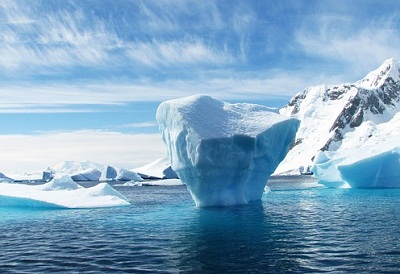A new study carried out by NASA scientists has revealed some surprising information about melting of ice sheets in Antarctica. According to this study, a geothermal heat source (called mantle plume) is lying deep under Antarctica’s Marie Byrd Land, and while this mantle plume does not pose any additional threats, it could explain the collapse and instability of ice sheet in Antarctica.
Mantle plumes are said to be the narrow streams of hot, molten rock erupting through Earth’s mantle. These molten rocks create a mushroom cap-like structure under the crust.
The stability of ice sheets is closely related to the quantity of water beneath the sheets. More water lubricating the glaciers from below means glaciers can slide more easily. Antarctica’s bedrock features several lakes and rivers, the largest being about the size of Lake Erie.
In the past, researchers had observed volcanic activity and a topographic dome feature in this region. A scientist at the University of Colorado Denver was the first to suggest that a mantle plume under Marie Byrd Land might explain these observations. The concept was recently supported by seismic imaging.
“I thought it was crazy. I didn’t see how we could have that amount of heat and still have ice on top of it,” said Helene Seroussi of NASA’s Jet Propulsion Laboratory (JPL) in California.
In the current study, Seroussi and Erik Ivins of JPL analyzed the plume with the help of Ice Sheet System Model (ISSM). This numerical model has been developed by scientists at JPL and the University of California and was improvised to capture natural heat sources as well as heat transport from melting, freezing, and liquid water; friction; and other processes. Both scientists also used the observations of changes in the altitude of the ice sheet surface made by NASA’s IceSat satellite and airborne Operation IceBridge campaign.
“These place a powerful constraint on allowable melt rates — the very thing we wanted to predict,” Ivins said.
These researchers also produced different simulations using multiple parameters to determine the possible location and size of the mantle plume,
Scientists believe the Marie Byrd Land mantle plume came into existence about 50 to 110 million years ago. This was the time when West Antarctic ice sheet had not formed. Then about 11,000 years ago, at the end of the last ice age, the ice sheet went through a period of rapid ice loss. This occurred as changes in global weather patterns and rising sea levels caused warm water coming closer to the ice sheet. Ivins and Seroussi suggest the Marie Byrd Land mantle plume could have accelerated this rapid ice loss in this region.
The detailed findings of the study were published in the Journal of Geophysical Research: Solid Earth.

